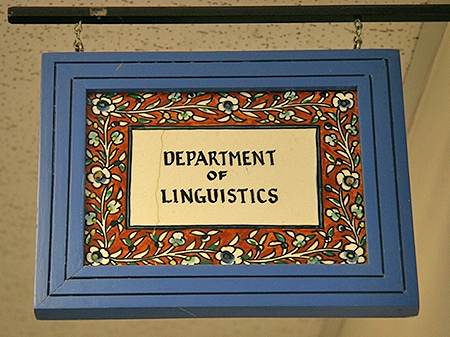
Linguistics ETDs
Publication Date
7-1-2016
Abstract
This dissertation investigates the history of Chinese DE [tə] constructions in light of the typology of secondary predication. A secondary predicate, such as hot in He drank the tea hot, is a predicate that provides subsidiary information to a substructure (the participant tea) of the more salient primary event (drank). Mandarin DE features in two strategies: (i) a DE-marked primary event elaborated by a predicate following it, and (ii) a DE-marked secondary predicate preposed to the primary predicate. Focusing on Late Medieval Chinese (7th to mid-13th c.), the study examines the evolution of the DE-marked strategies from three distinctive constructions: resultative [V DE1 VP] by DE1 (得), nominal modification by DE2 (底/的), and secondary predication by DE3 (地). The first theme concerns the interactions between DE2-marked nominalization and DE3-marked secondary predicate constructions. Results show that DE2 and DE3 developed from opposite poles of the attribution vs. predication continuum, overlapping in categories intermediate between prototypical restrictive modification and secondary predication. Their distinctive information-packaging functions are consistently mapped to different construals of a property’s time-stability, which are reflected in their collocational preferences. The second theme of the study deals with the merger of DE1 and DE2 constructions and the creation of the [V DE Pred] topic-comment schema, where [V DE] represents an event as the topic, and Pred makes an assertion about a substructure of V. The discussion focuses on the structural and semantic changes of the [V DE1 VP] construction that facilitate its alignment with the DE2-marked topic-comment construction. The development of DE constructions mirrors semantic shifts between temporally anterior vs. simultaneous relations and conceptual fluidity between event- vs. participant-orientation, parameters that feature in the encoding of secondary predication crosslinguistically (Verkerk 2009, Himmelmann and Schultze-Berndt 2005, van der Auwera and Malchukov 2005, Loeb-Diehl 2005). The findings also suggest a reevaluation of the typology. Notably, semantic orientation is not crucial to whether a semantic relation is encoded by a DE construction, or which DE construction is selected. Instead, it is information-packaging functions, construals of time-stability, and iconic principles that play a dominant role.
Language
English
Keywords
Chinese DE, construction grammar, language change, secondary predication, typology
Document Type
Dissertation
Degree Name
Linguistics
Level of Degree
Doctoral
Department Name
Department of Linguistics
First Committee Member (Chair)
Chappell, Hilary
Second Committee Member
Koops, Christian
Third Committee Member
Wilcox, Sherman
Recommended Citation
Lin, You-Min. "Chinese DE constructions in secondary predication: Historical and typological perspectives." (2016). https://digitalrepository.unm.edu/ling_etds/42
